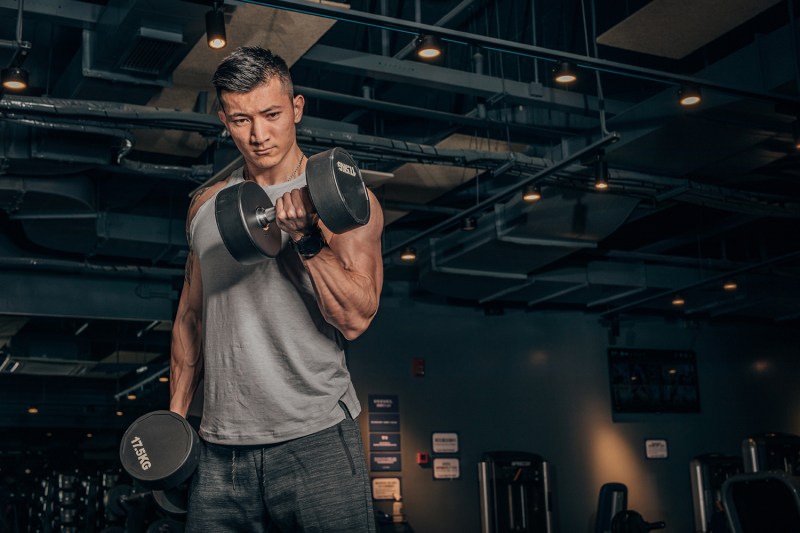
Want to improve your health by going to the gym? Not knowing where to start can put a damper on taking the first step. Weightlifting and cardio are the most common forms of exercise when it comes to losing weight and gaining muscle, but which forms are best for you?
Whether you want to lose love handles, exercise in 20 minutes, train for an ultra marathon or endurance event, or simply take better care of yourself, making a consistent habit out of exercising is the first step. Weight training creates a solid foundation that sets you up to achieve your fitness goals, but it can feel overwhelming for beginners.
“On a physical level, weight training can improve strength, endurance, and balance, and it also helps keep your bones healthy,” says Kenta Seki, ACE-certified personal trainer and FitOn App Trainer. “On a mental level, exercise and weight training can improve your mood and sleep patterns and even boost your self-confidence.”
So to help you become familiar with the movements and techniques of weight training, we worked with Kenta to create a beginners’ workout guide in order for you to execute these exercises and give you the results you’re after. You don’t need a ton of workout equipment to see results quickly – you just need a basic understanding of the weight training principles.
Before you start throwing heavy weights around your local gym or home gym, Kenta has a few pieces of advice for weight training safely.
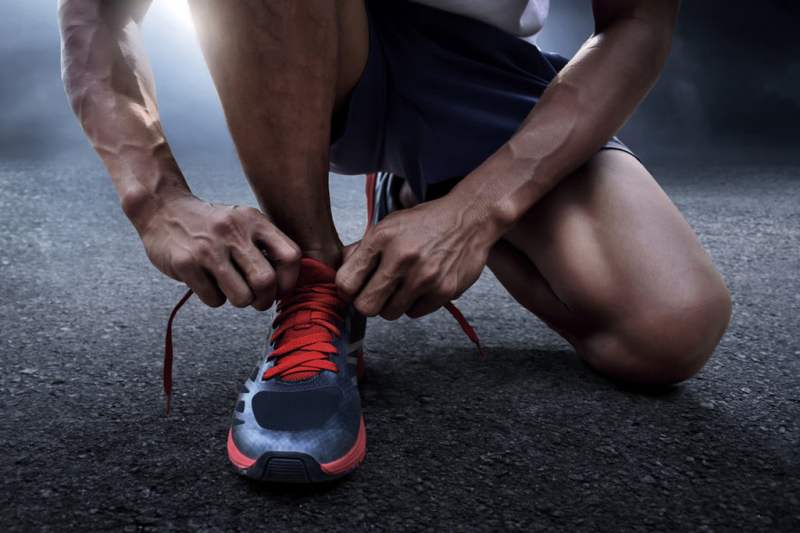
Warm-up
“Don’t skip your warm-up,” says Kenta. A light cardio exercise, like a 5-minute run or jog, and light stretching will help your body prepare for the work it’s about to do.
Another tip: Remember to breathe. Avoid holding your breath during any of the exercises below. Exhale while you’re putting forth the most effort on an exercise, and inhale as you’re coming back to your starting position.
Finally, Kenta underscores the importance of form above all else. “Don’t sacrifice form to lift heavier weights,” she warns. If your form is suffering due to the amount of weight you’re lifting, take it down a notch and work toward that heavier weight. Having goals to strive for is important in fitness, like anything else. You’ll feel better when you can lift that heavier weight confidently and properly than if you exhaust and possibly injure yourself in the process.
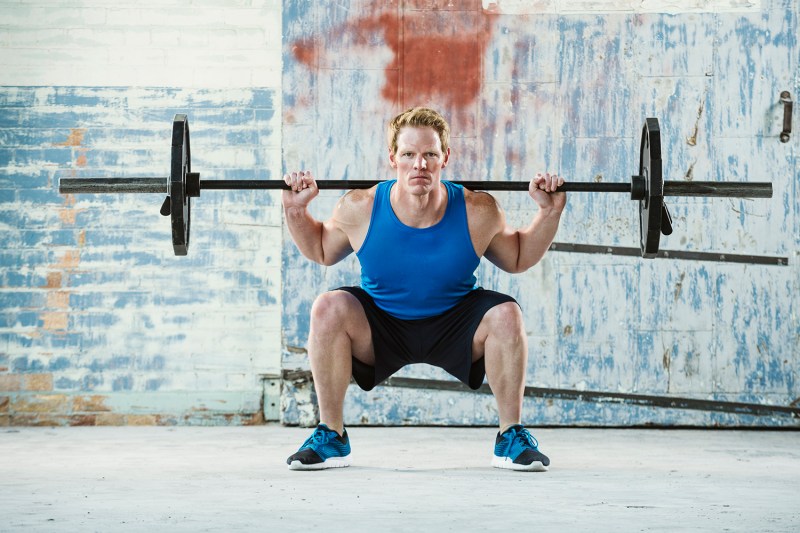
Squats
Squats certainly help build muscle in the legs, but the squatting movement also creates an anabolic environment, which promotes body-wide muscle building. Squats can help you improve both your upper and lower body strength when done correctly, so nailing this exercise will set you up for success in future moves.
Execution
- Start with your legs hip-distance apart.
- Hinge at the hips as you drive your butt backward.
- Lower your butt until it’s parallel to the knees, keeping your toes and heels firmly planted on the ground.
- If you don’t have a squat rack at home, take a dumbbell in each hand while performing this exercise, or dangle a kettlebell between your legs.
- Do two sets of 15 repetitions.
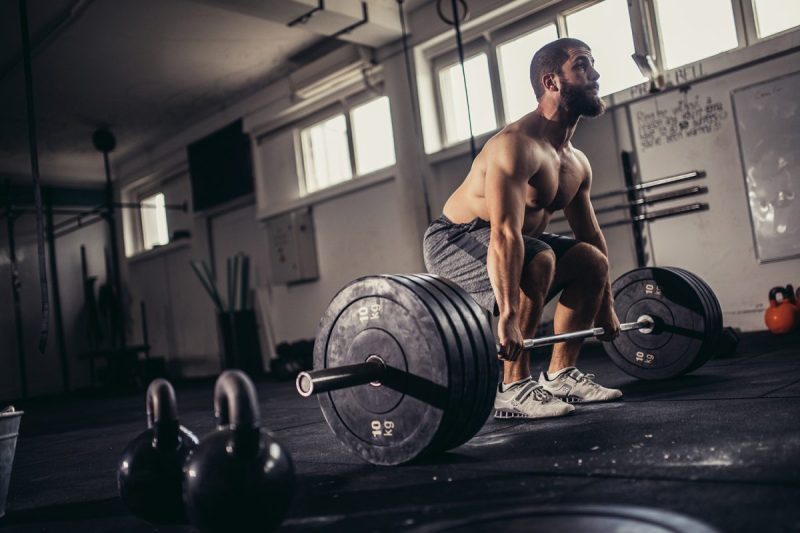
Deadlifts
Deadlifts sound easy: At first glance, it just looks like you’re picking up a heavy object and setting it down. It might look simple, but this movement is actually incredibly complex and easy to do incorrectly, which can result in injury if you’re not careful. This exercise strengthens your legs, back, and the rest of your posterior chain, which helps take the stress off your lower back. It’s a beneficial exercise when done right, so establishing proper form is crucial to avoid having to correct bad habits later.
Execution
- Grab the bar or dumbbells with an overhand grip, meaning your knuckles are facing away from you.
- Lift the weight, keeping it close to your legs, focusing on taking the weight back into your heels.
- Look straight ahead, not down.
- Check your posture and make sure you’re standing up straight with your shoulders back, squeezing your shoulder blades, imagining you’re holding a pencil between them.
- Lift the weight to thigh level, pause, and then return to your starting position.
- Rest the weight between reps, and remember to correct your form before starting another. Do two sets of 15.
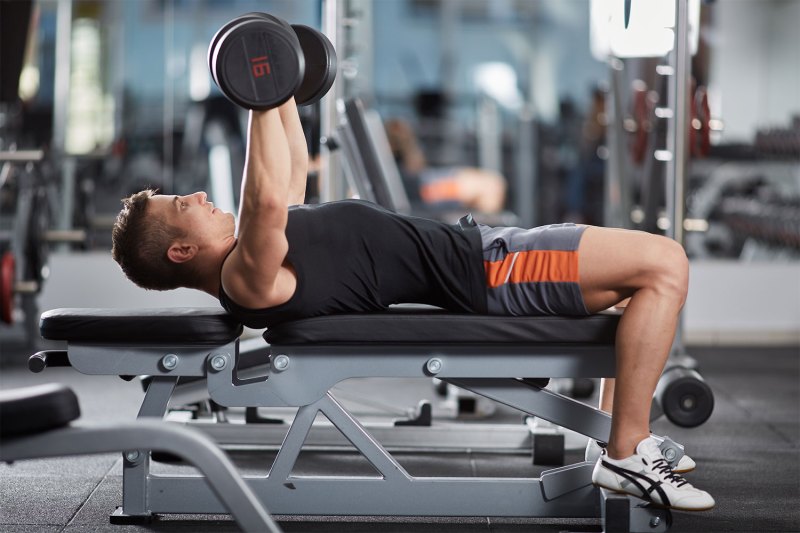
Chest presses
Chest presses will help develop your upper body strength by toning your pectorals, deltoids, triceps, and biceps. This foundational arm workout is an effective and straightforward way to work out your upper body and develop that wide chest most men covet.
If you’re working out at home, this exercise can easily be done with dumbbells.
Execution
- Lie back on a bench with your arms slightly bent and the weights aligned with your shoulders.
- Brace your abs, keeping your feet on the floor and your lower back slightly arched as you lower the weights to shoulder level.
- Do two sets of 15 reps.
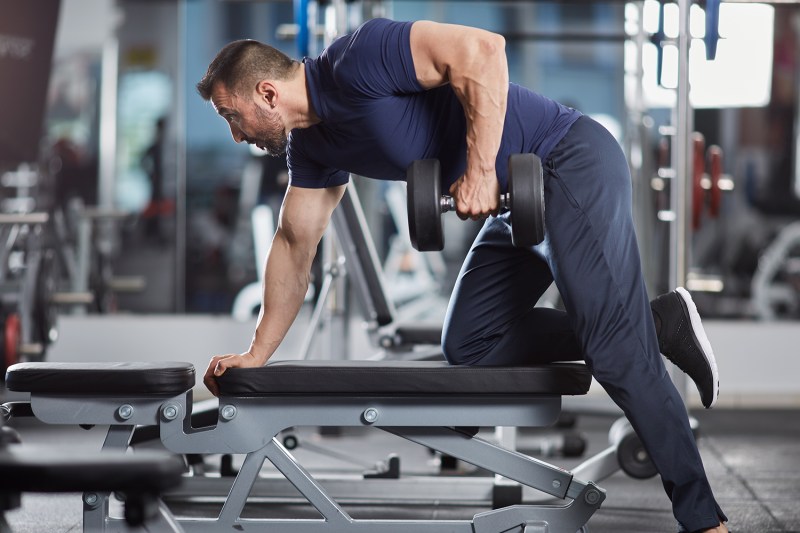
Rows
Rows are another upper body workout that carves and sculpts your back muscles. This exercise is especially important because it’s a movement that we don’t typically do in our daily lives, so it’s activating and building a muscle that rarely gets any attention. It also helps strengthen your posterior chain, which can alleviate back pain.
Dumbbell rows give you a better range of motion than other row variations, so it’s what we’d recommend here.
Execution
- Place one hand and one knee on the bench, grabbing a dumbbell in the other hand.
- Let your arm hang down, keeping your spine aligned, and then row the weight back, squeezing your shoulder blades.
- Think about pulling with your back, not your biceps, keeping the weight close to your body.
- Do two sets of 15 reps with both arms, switching in between sets.
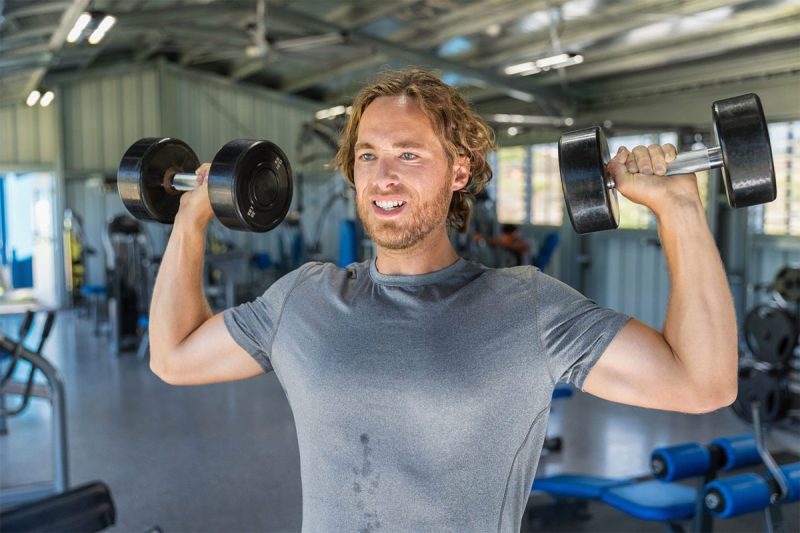
Shoulder presses
The shoulder press engages your shoulders and core, which can improve muscle definition as well as stability. Your shoulders get activated in nearly every upper body strength workout, so strong shoulders can improve your performance in other exercises.
Using dumbbells in this exercise helps activate the anterior (front) deltoid more than when using a barbell.
Execution
- To perform the shoulder press, start by holding a dumbbell in each hand at shoulder level.
- Don’t go wide – rotate your elbows forward a few degrees to be in front of your shoulders slightly.
- Brace your abs, avoid arching your back, and press the weights straight overhead while squeezing your shoulder blades.
- Do two sets of 15 reps.
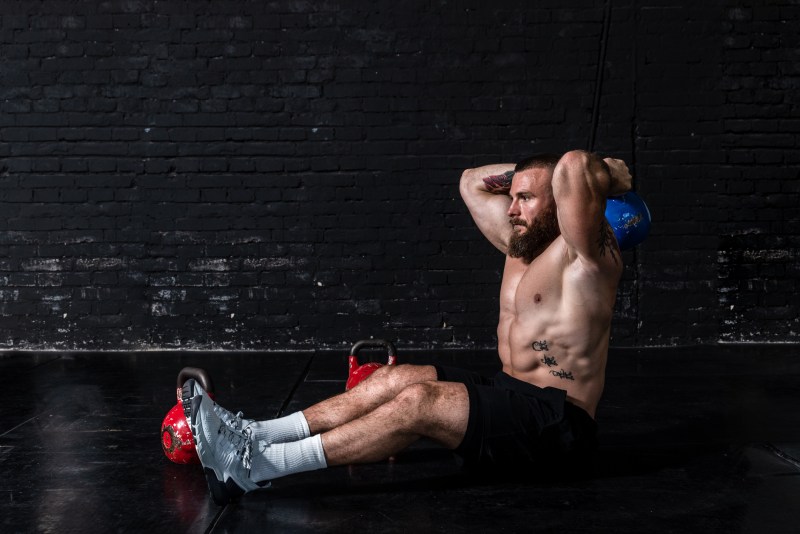
Overhead tricep extensions
The triceps are the muscles in the back of your arm, which is why they tend to be ignored in favor of bicep workouts that give you those bulging muscles out on display for the world to see. But if you want balanced, tank-top-worthy arms by summer, you need to make sure you’re giving your triceps a little love.
The overhead triceps extension exercise is an isolation exercise, meaning it focuses on the tricep muscle alone. You can do overhead tricep extensions with one or two dumbells, either standing or seating.
Execution
- Start with the weight behind your head.
- Lift the dumbbell until your arms are fully extended, keeping your elbows close to your head and pointing forward and your palms facing the sky.
- Bend at the elbows, lowing the weight behind your head.
Bicep curls
Bicep curls are perhaps the most recognizable weight training exercise. The bicep muscle plays an important role in most pulling exercises, like deadlifts and rows, so focusing on beefing up your biceps will certainly pay off and help you unlock your full fitness potential.
Execution
- Start with a dumbbell in each hand.
- Keeping your upper arms glued to your sides, curl the weights until they reach your shoulder.
- Return to the starting position and repeat 15 times over two sets.
Basics work best
Utilizing this exercise guide is the first step to learning the basics of an overall solid workout plan. Take your time and go light and slow when learning these moves and before long, fitness will be a consistency in your life.
How often should I exercise?
Especially when starting out, it is important that you don’t overwhelm yourself with a big commitment. Often, people will start off by saying that they will work out five days a week, and then they only have time to get in three. They feel disappointed in themselves and give up, missing out on all the potential they have.
Be honest and realistic about how much time you have every week to dedicate to exercise, and plan out the days and times ahead of time. Twice a week is a great place to start, and then work your way up. Ideally, you want to exercise four to five times per week.
Editors' Recommendations
- 6 active recovery workouts that prevent injuries, according to a pro trainer
- Garmin’s new watch features for runners and cyclists rival Apple’s smartwatch updates
- Yes, there are real benefits of walking fast — an experts’ guide
- Protein for muscle gain: Personal trainers reveal their top tips
- These are the best HIIT workouts for beginners






